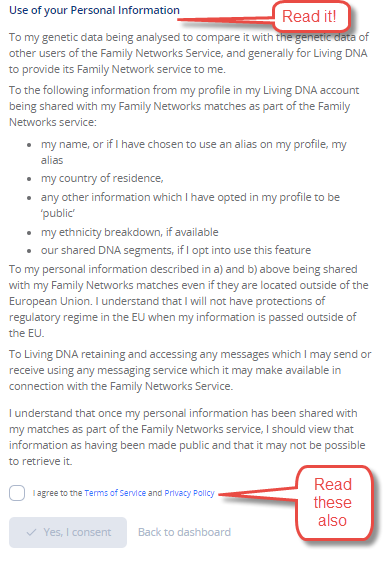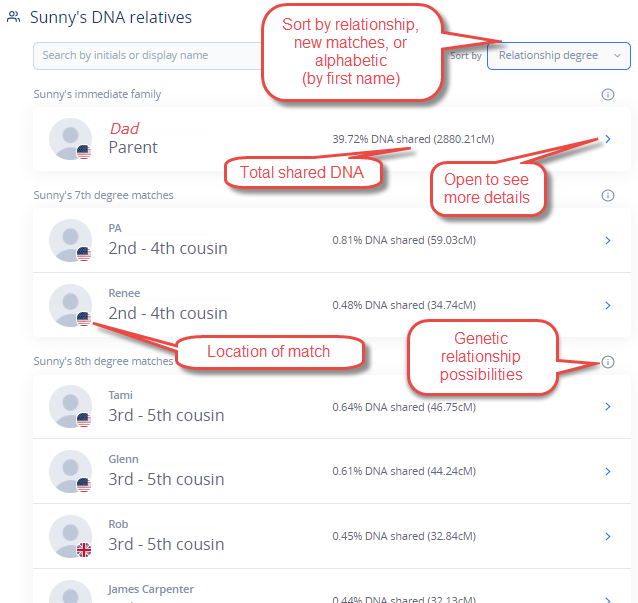Living DNA’s Family Networks (DNA matches experience) is progressing. Here’s how to opt in to DNA matching and what you’ll see when you do.

I first tested with Living DNA because I was curious about the specificity with which they report British Isles origins. Most of my English, Scottish, Irish and Welsh ancestors are on my dad’s side, so he tested there, too. I’m pleased to see their progress in the DNA matching experience so I can now begin to sort and identify my genetic cousins who have tested there too. Here’s how you can do the same.
Opt in to Family Networks
To see your DNA matches at Living DNA*, you need to opt in to Family Networks. Log in, and look at the left-side dashboard. Click DNA Profiles and open the right test profile (some people manage more than one test). Scroll down to Permissions. The default setting is “Not opted in.” Click the right arrow next to Matching:

A statement will appear about use of your personal information. Read it carefully, along with the linked Terms of Service and Privacy Policy:

If you agree with these terms, go ahead and click “Yes, I consent.”
Tip: While you’re in the DNA Profile area, you can also set a Display Name (an alias or first name only) for greater privacy. Otherwise, your matches will see your full name.
Using Family Networks
It may take up to 3 weeks for your matching experience to begin. Their website explains that this is because the system refreshes only periodically: “All new members are released into the pool every two weeks and the matching algorithms are run after this, so it’s worth checking in to your portal every three weeks or so.”
Once your Family Network has activated, it’s time to explore your DNA matches. From the dashboard on the left, click Relatives. You’ll see a match list that looks something like this. I’ve removed full names for privacy and added labels for you. As you can see, there are lots of places to click. Do it! Explore! You won’t break anything!

If you click on the info circle, you’ll see a chart showing the range of your possible genetic relationships for that match. The more distant the relationship, the more possibilities, both because the tree gets bigger and because of variability in how DNA gets passed on each time a new person is born.
Explore Living DNA Matches
When you find a match you want to investigate, click on it. You can do two things on the match page right now:

1. Review the other matches you have in common with this person. They can tell you something about where this match belongs on your family tree. Because my father has tested, I can see that this match is related to me on my father’s side. That’s great! I’ve just eliminated my mom’s entire side of the tree for where this match belongs.
2. Start a conversation with your match (OPTIONAL). You may not need or want to communicate with every match. But if your purposes for DNA testing include connecting with living relatives or building your family tree, you may want to contact them.
What’s Next?
Now that you know how to access the match feature at Living DNA, you can start reaching out to your matches and connecting them. Maybe they have some information that can shed light on a missing ancestor, or maybe they have a family story that you haven’t heard yet. Download our free guide to get tips on how to contact your DNA matches.

